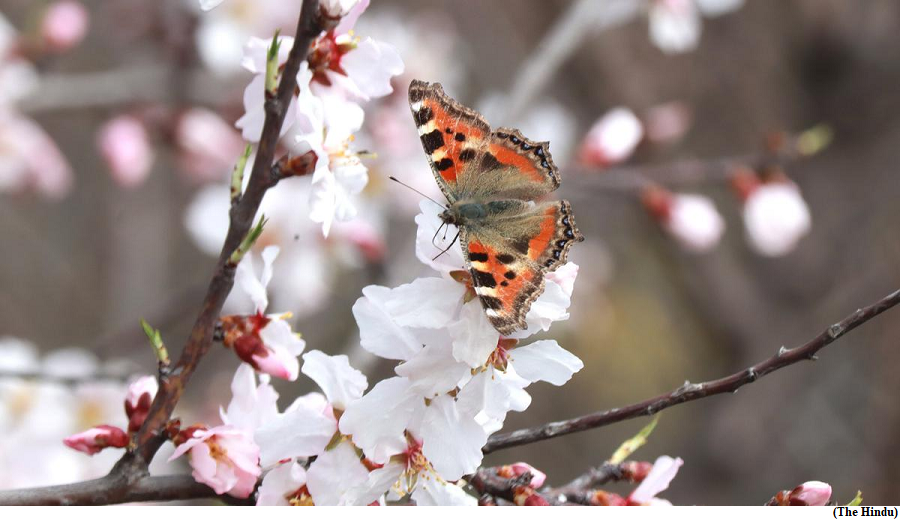CAG had flagged many shortcomings in derailments report (GS Paper 2, Polity and Governance)

Context:
- The Comptroller and Auditor-General of India (CAG), in a 2022 report on “Derailments in Indian Railways”, had flagged multiple shortcomings and made several recommendations, which included the suggestion to ensure strict adherence to the scheduled timelines for conducting and finalising accident inquiries.
Focus:
- The instances mentioned in the report were those which came to the CAG’s attention in the course of the test audit for the period April 2017 to March 2021, as well as those which had come to its notice in earlier years, but could not be reported in the previous audit reports.
- The focus of the audit was to ascertain whether measures to prevent derailments and collisions were clearly laid down and implemented by the Ministry of Railways.
Key Highlights:
- The auditors found that there were shortfalls ranging from 30% to 100% in inspections by track recording cars and idling of track machines owing to various reasons.
- Itsmain objective was to ascertain the cause of an accident and to formulate proposals for preventing their occurrence.
- In the process it is ascertained if any inherent defect exists in the system of working or in the physical appliances, such as tracks, rolling stock and other working apparatus. Measures for rectifying the defects and irregularities are then proposed based on the findings.
Factor responsible for derailment:
- Analysis of 1,129 ‘Inquiry Reports’ of derailment accidents in 16 Zonal Railways (ZRs) revealed 24 factors responsible for derailments in the selected cases/accidents. The total damages/loss of assets in these cases were reported as ₹32.96 crore.
- While total 422 derailments were attributable to the Engineering Department, the major factor responsible for derailment was related to “maintenance of track” (171 cases), followed by “deviation of track parameters beyond permissible limits” (156 cases).
- In all, 182 derailments were attributable to the Mechanical Department and there were 154 accidents attributable to the loco pilots. “Bad driving/over speeding” was also a key factor.
- The number of accidents attributable to the Operating Department was 275 and “incorrect setting of points and other mistakes in shunting operations” accounted for 84%.
- Of the 1,127 derailments during 2017-21, 289 were linked to track renewals.
Study reveals butterflies biogeographic origins
(GS Paper 3, Environment)
Why in news?
- Recently, an international team of researchers sequenced 391 genes from nearly 2,300 butterfly species from 90 countries to help reconstruct a new phylogenomic tree of butterflies representing 92% of all genera.

Details:
- While the earlier classification was based more on butterfly morphology, the latest attempt has been based on genome sequencing. As a result, the researchers found that at least 36 butterfly tribes (above genus in taxonomical classification) require reclassification.
Key Findings:
- The work revealed that butterflies originated in the Americas in the late Cretaceous, about 100 million years after the origin of flowering plants.
- While butterflies dispersed from North America to Europe relatively quickly about 75 million years ago due to the landmass then being nearly contiguous, the dispersal from North America to Asia was through colder northern regions and happened around 60 million years ago.
- Both hostile climate and lack of contiguous landmass might have been the reasons why there was a lag in dispersal from North America to Asia.
Diversity across regions:
- Despite being its place of origin, North America largely being a temperate region has far less diversity compared with the tropical region in South America and Asia. Speciation is far higher in the tropics than the temperate region.
- Suitable climate that allows butterflies to live through the year, the greater diversity of habitats, and far higher diversity and absolute number of plant species that serve as source of food for butterflies serve as main drivers for higher speciation of butterflies in the tropics.
Dispersal:
- Like in most other animals, the dispersal of butterflies never followed a single direction.
- After initial dispersal of butterflies from temperate to tropical region, butterflies then dispersed from the tropics to the temperate region and vice versa in different butterfly groups that have evolved subsequently.
- Butterflies were present on all modern continental landmasses by Late Eocene (34 million years ago.



